
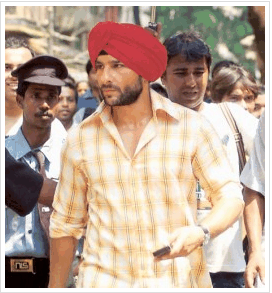 I’ll admit…Bollywood movies were boycotted and banned in my household as far back as I can remember, so maybe these “religious sensitivity pre-screenings” are common…but the course of events surrounding this new movie is still quite strange…even for Bollywood’s standards.
I’ll admit…Bollywood movies were boycotted and banned in my household as far back as I can remember, so maybe these “religious sensitivity pre-screenings” are common…but the course of events surrounding this new movie is still quite strange…even for Bollywood’s standards.
Last week, a new movie titled “Love Aaj Kal” was released, with Saif Ali Khan playing a Sikh as the lead male role. However, shortly before the release, the Punjab Cultural and Heritage Board objected to his portrayal of a Sikh.
Explaining their stand, Charan Singh Sapra, President of Punjabi Cultural And Heritage Board informed a tabloid, “We are objecting on the grounds that Saif is shown with a very trim beard.”
Long story short, after Khan’s formal apology and a paparazzi-filled press conference at Guru Singh Sabha Gurdwara, Dadar – 15 seconds of a questionable scene was cut from the movie and Khan declared he would not portray a Sikh “incorrectly” again in future roles. All smiles, the Punjabi Cultural And Heritage Board gave the movie “two thumbs up” and the green light to proceed.
I guess I should be happy that an organization is concerned enough about the image of Sikhs to raise such a fuss…except for the fact that we’re talking about fantasy-land. My question is…where is the organization that cares about the Sikh image in real life?
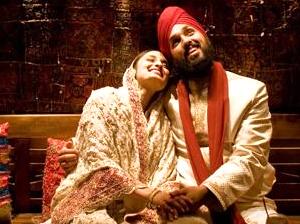 Since I exist in the age bracket where many of my friends are married or getting married, I am aptly aware of the concerns couples have about adjusting to one another after marriage. For example, how will living habits change? How will your husband/wife fit into your family? It’s a pretty daunting concept – especially for individuals who wait to get married later on in life, after years of education and commitment to careers, and along with this, years of being single. I’ve known many couples over the years who have had a difficult time adjusting to being part of a union. How can we blame them? Our community offers very little as far as pre-marital counseling for Sikh couples. In fact, a quick google search for “Sikh Marriage Counseling” doesn’t bring up anything pertinent.
Since I exist in the age bracket where many of my friends are married or getting married, I am aptly aware of the concerns couples have about adjusting to one another after marriage. For example, how will living habits change? How will your husband/wife fit into your family? It’s a pretty daunting concept – especially for individuals who wait to get married later on in life, after years of education and commitment to careers, and along with this, years of being single. I’ve known many couples over the years who have had a difficult time adjusting to being part of a union. How can we blame them? Our community offers very little as far as pre-marital counseling for Sikh couples. In fact, a quick google search for “Sikh Marriage Counseling” doesn’t bring up anything pertinent.
For many, it is also very important to know that your partner is on a similar spiritual path. This may be one of the most important elements to think about prior to marriage – as it impacts your day to day living and the way you may raise your children in the future. Some religions actually require couples to go through marriage counseling prior to marriage. We don’t seem to have this in our community but it’s not a bad idea. How many couples do you know who have gone to the Giani at their local gurdwara to elicit marriage advice? If any, i’m sure the number is small. Nevertheless, i feel this is integral to the success of marriage as there are certain questions which should be discussed before marriage.
What I did come across, however, are the following two tools. First, the Sikh Research Institute organizes the Grihast Retreat which,
is a 2-day event for young couples to strengthen marriage and family relationships by offering deeper communication between wife and husband. Grihast incorporates diverse themes that are at the foundation of a married life. New perspectives provide insights on building meaningful relationships while workshops and discussions offer a glimpse of the Gur?’s vision and ideals on marriage.
With so few details, it may be premature to begin writing some thoughts, but that hasn’t really stopped me before.
Although each incident has its own genesis, with the recent spate of shootings this week, a discussion forum is needed. First I begin with an analysis of various Indian media coverage and then shift to a broader discussion then just the two events.
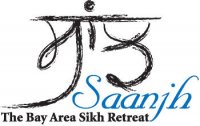
“Saanjh”-the annual Bay Area Sikh Retreat is taking place Thursday, August 27th-Sunday, August 30th at the Monte Toyon campsite near Santa Cruz, California. Share your experiences and connect with other Sikhs through a Guru-inspired sangat. This year’s theme is “Developing a Panthic Vision Towards 2084”. In 2009 we commemorate the 25th anniversary of 1984. When we fast-forward to its centennial where do we want to be as a Panth-a Sikh community? What is our collective vision for 2084? How do we need to develop as individuals and a community in order to heal ourselves and find solutions to our communal problems? Come share your opinions and connect with other concerned Sikhs through a collaborative approach to finding solutions. You will be inspired by diwans, conversations, debates, and laughter. Register by August 3rd to avoid late fees. There is a separate fee schedule for students and professionals. For more information visit www.saanjh.org. If you have any questions, e-mail sawal-jawab@saanjh.org.
As way of background, “Saanjh” began last year by a group of Bay Area Sikhs who were inspired by their personal experiences of engaging with sangats world-wide. They felt there was a need in California to “retreat” from our daily routines into a relaxed space where we could be inspired by our Guru. With this inspiration we could go back to our “real” lives as better engaged Sikhs spiritually, socially, and politically. The focus of the retreat is on learning from our experiences as diverse Sikhs in order to develop a collective vision for our community.
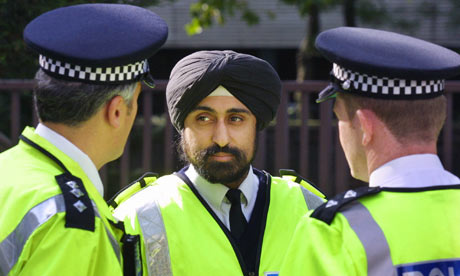 Sikh victims of crime will now be given the option of requesting a Sikh police officer to work on their case. Well, in London at least. The goal of this new service, offered by the Metropolitan Police, is to make use of the “special” knowledge officers have in regards to Punjabi culture to help address issues such as forced marriage and honor crimes. Many police officers believe that crimes have gone unreported and unsolved within the Punjabi Sikh community due to a lack of cultural understanding by police officers from a “white” background.
Sikh victims of crime will now be given the option of requesting a Sikh police officer to work on their case. Well, in London at least. The goal of this new service, offered by the Metropolitan Police, is to make use of the “special” knowledge officers have in regards to Punjabi culture to help address issues such as forced marriage and honor crimes. Many police officers believe that crimes have gone unreported and unsolved within the Punjabi Sikh community due to a lack of cultural understanding by police officers from a “white” background.
Palbinder Singh, chairman of the Metropolitan Police Sikh Association (MPSA) said: “It’s about understanding and appreciating difference. I don’t believe a white officer is ever going to be fully conversant with a Sikh for example. We have got evidence in the most serious type of crimes where Punjabi culture itself is the issue, that they haven’t been properly investigated.” [link]
Cringe.
When the British Sikh Police Association (BSPA) was set up, a spokesman suggested that the organization represented an important move towards social cohesion and integration, just like ‘other support networks within the police’. The BSPA did an excellent job at setting up an online service to allow women to report honor-based violence. It’s a completely valid effort to address the needs of minority communities – and something which should be celebrated. However, while I am a huge advocate for providing culturally and linguistically relevant services in all public sectors, I’m not sure that the solution proposed by the Metropolitan Police in England is necessary a good thing. Instead of providing diversity training to all members of the police force, this policy divides justice across ethnic lines.
 Throughout the United States, the issue of race and racial profiling has taken center stage – all linked to a local event in Cambridge, MA. It was there, near the Harvard University Campus, that well-known academic, scholar, and public intellectual, Henry Louis Gates Jr. had an altercation with a police officer, Sgt. James Crowley. What may have been a local affair was catapulted to the national stage with Barack Obama weighing in and giving an assessment in favor of Gates, a friend of his.
Throughout the United States, the issue of race and racial profiling has taken center stage – all linked to a local event in Cambridge, MA. It was there, near the Harvard University Campus, that well-known academic, scholar, and public intellectual, Henry Louis Gates Jr. had an altercation with a police officer, Sgt. James Crowley. What may have been a local affair was catapulted to the national stage with Barack Obama weighing in and giving an assessment in favor of Gates, a friend of his.
The reactions that have followed in the last week have been swift and rather predictable. “Conservatives” have come to the defense of a hardworking cop, who was just trying to do his job, while Gates is a pampered black elitist, always ready to “play the race card”; “liberals” concerned with civil rights see Gates as another victim of racial profiling. Some have sought a deeper analysis about structural problems in the society we live.
A few articles have delved into understanding the events from both protagonists’ perspective:
Should Gates have realized that you can’t antagonize the police? Should Crowley have understood what it means to suspect a black man of breaking into his own home? Arguments will persist for years.[link]
Still, I believe whatever the merits of the individual case, Sikhs should be paying special attention to the ongoing story.
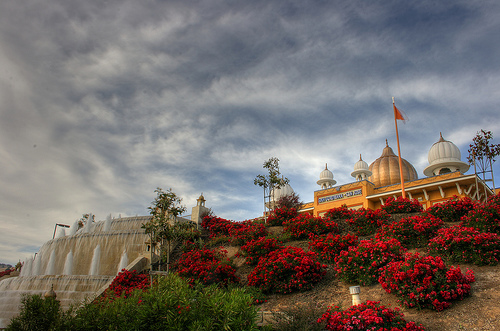 Every other city we go….
Every other city we go….
The story repeats itself.
There are 2 Sikhs. They decide to build a Gurdwara. First comes love, then they disparage, next comes litigation and community image damage.
The most recent editions – Bakersfield and San Jose.
A nice piece in the Columbia Journalist discusses the challenges incurred by young Sikh men and women as they navigate through their adolescent years. The article tells us of two friends, Sonu Singh and Manjinder Singh, who have bonded over their love of hip-hop, video games, and (of course) girls. However, as the article notes, what sets these friends apart is the fact that while Manjinder chooses to keep his kesh, Sonu plans to grow his hair and wear a pagh later on in life.
Sonu and Manjinder embody a larger tension within the Sikh community – the internal dilemma among children to remain true to their faith while still fitting in with their peers. After the terrorist attacks of September 11, 2001, some Sikhs simply do not want to stand out. Incidents of harassment and discrimination towards Sikhs students have increased dramatically since then…
 The article talks about the various cases of harassment and bullying which have taken place in New York City schools. The Sikh Coalition has stated that almost half of students who wear paghs have experienced physical violence in school. Yes, half! While bullying affects children of all ethnic groups, it is clear that Sikh children feel especially vulnerable. In addition, many young Sikh children don’t feel that they are adequately equipped to deal with harassment targeted at their physical appearance.
The article talks about the various cases of harassment and bullying which have taken place in New York City schools. The Sikh Coalition has stated that almost half of students who wear paghs have experienced physical violence in school. Yes, half! While bullying affects children of all ethnic groups, it is clear that Sikh children feel especially vulnerable. In addition, many young Sikh children don’t feel that they are adequately equipped to deal with harassment targeted at their physical appearance.
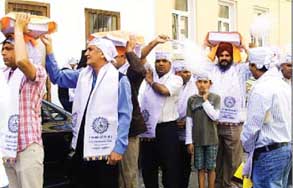 Beyond brown or white Sikhs, beyond various caste Sikhs, when and how do we come together as Sikhs? Is the ‘jahaaz’ that is Guru Nanak’s Naam large enough to carry us all, or with a narrow set of doxies and praxis do we restrict those that can enter.
Beyond brown or white Sikhs, beyond various caste Sikhs, when and how do we come together as Sikhs? Is the ‘jahaaz’ that is Guru Nanak’s Naam large enough to carry us all, or with a narrow set of doxies and praxis do we restrict those that can enter.
Despite the various attacks on the Singh Sabha movement for only promoting Khalsa hegemony and other spurious slanders by neo-Sanatans, post-colonialists (I am reminded of a professor that once told me that he would only become a post-colonialist, when colonialism ends) attempting to form neo-Brahman ‘intelligentsias’, those that believe they ‘own’ the Sikh identity, some Hindu chauvinist groups, and various beatniks, the movement was in fact very broad-minded and fought to enlarge the tent that is the Sikh Qaum.
They understood the difference between public and private aspects. In private, people may have their own practices, beliefs, etc. and while the Singh Sabha sought to bring these more in line with the practices and principles of Gurbani, they did allow some diversity in private. In public, we come together and stand by the Panthic rehat maryada.
For many years the Ravidasia, occupied such a place. They had distinct practices in their own places of congregation, but they were part of the larger Sikh Qaum. That was until now.
 Gurdwara Panja Sahib, located just outside Pakistan’s North-West frontier province, has become the temporary home for about 3,000 Sikhs who have been displaced by the presence of the Taliban in the region. Gurdwara Panja Sahib is one of the most notable Sikh shrines in Pakistan and has been transformed into the ultimate role of a gurdwara. With help from community donations, the gurdwara has a clinic, a 24-hour kitchen and a temporary school for children. For the past two months, Sikh families have been living at the gurdwara, afraid to return back to their homes. Some of the region’s refugees have started to return back to their homes in military-protected convoys. However, many Sikhs feel they may never be able to move home,
Gurdwara Panja Sahib, located just outside Pakistan’s North-West frontier province, has become the temporary home for about 3,000 Sikhs who have been displaced by the presence of the Taliban in the region. Gurdwara Panja Sahib is one of the most notable Sikh shrines in Pakistan and has been transformed into the ultimate role of a gurdwara. With help from community donations, the gurdwara has a clinic, a 24-hour kitchen and a temporary school for children. For the past two months, Sikh families have been living at the gurdwara, afraid to return back to their homes. Some of the region’s refugees have started to return back to their homes in military-protected convoys. However, many Sikhs feel they may never be able to move home,
Two months ago, long-haired Taliban fighters stormed into Orakzai, a tribal agency near the Afghan border, brandishing AK-47 rifles and bringing a harsh demand: that the area’s 40 Sikh families should pay jazia, an ancient tax on non-Muslims living in an Islamic state. To encourage the payment of 12m rupees (£90,000), they kidnapped and tortured one of Singh’s neighbours. The Sikh community banded together to pay half the money, secured his release, then fled. “The Taliban are still demanding the money,” said Singh, a sprig of orange visible under his blue turban. “They recently rang me looking for the rest of the money. We are afraid they will find us, even here.” [link]
 The list of 1984-inspired Sikh propositions continue to grow. In the past, I have mentioned more than my fair share and last week my fellow langa(w)r-iter added one more. Here is another great proposal.
The list of 1984-inspired Sikh propositions continue to grow. In the past, I have mentioned more than my fair share and last week my fellow langa(w)r-iter added one more. Here is another great proposal.
This year marks the the creation of two great scholarships by the Jakara Movement. One aimed at high schoolers: “Bhai Amrik Singh Scholarship for Excellence” and the other at junior/community college transfers: “Bibi Upkar Kaur Scholarship for Excellence.” In this 25th year of commemoration of the 3rd Sikh Genocide (Ghallughara), these are the institutions that will last. The Scholarships provide national recognition and financial support for students, who exhibit outstanding academic strength as well as exceptional service to Sikhs and the American community at large.
The organizers describe them:
In honor of two pioneers of Sikh activism, Bibi Upkar Kaur and Bhai Amrik Singh’s exemplary dedication to the Sikh community are illustrated by their association with Sikh student organizations. Both were presidents of their respective Sikh student organizations and lived by their convictions of striving for excellence through dedication and perseverance in all aspects of their lives. Both applied this conviction to their educational pursuits, being accomplished students, and supportive of other students in pursuing academic excellence and achievement as well. They believed that as Sikhs, students had the obligation to not only excel in education, but also to carry the responsibility of being of service to the community. Bibi Upkar Kaur and Bhai Amrik Singh gave their lives for this very cause. Hence, these distinguished awards reflects Bibi Upkar Kaur and Bhai Amrik Singh’s legacies of commitment to academic excellence and service to the Sikh community as well as the greater community at large.
Early last week, a remarkable thing happened. Sikh children took to NYC streets again- some in strollers- and they were heard.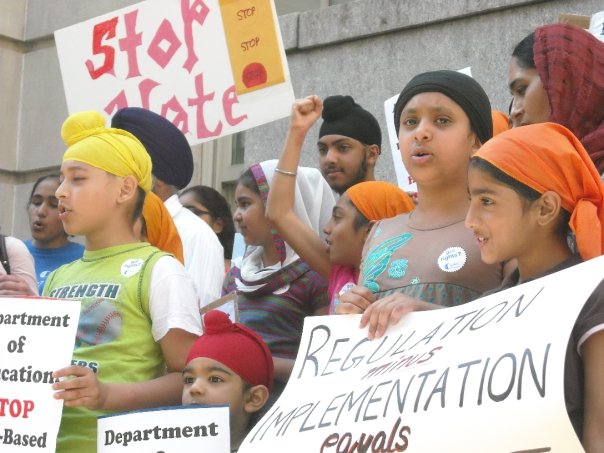
Last fall, the New York Department of Education passed a regulation in response to disturbing findings about the bullying that Sikh children face in schools. The regulation promised to define, track, and prevent bias-based harassment in NYC public schools. So after the first school year in which the regulation was in effect, how did the schools measure up?
The results were made public at a recent press conference by the Sikh Coalition and Sikh youth in NYC in front of the Department of Education’s headquarters. The Sikh Coalition teamed up with area organizations including the Coalition for Asian American Children and Families (CACF) and the Asian American Legal Defense and Education Fund (AALDEF), to release a report card grading the first year of the regulation’s implementation. Speakers at the press conference included representatives from Queens and Brooklyn schools and organizations such as the New York Civil Liberties Union (NYCLU), Desis Rising Up and Moving (DRUM), and Make the Road NY.
Problems remain, the report card shows. Based on the Sikh Coalition’s survey, there was no significant decline in the rate of harassment in the first year of the regulation’s implementation. [pg.9] Perhaps most disturbingly, out of all harassment reported by children, 16% was committed by a school official such as a teacher, school staff member, or security officer. [pg.12] In addition, after 90% of reported incidents of harassment to school officials, the school failed to properly follow protocol for investigation and follow-up. [pg.11]
For the full report card, click here.
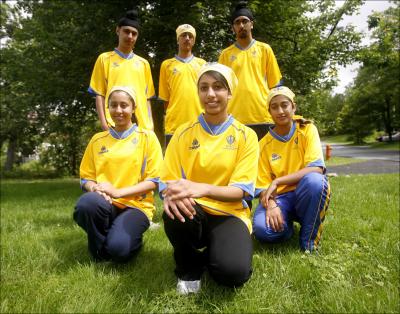
In order to provide a little bit of cheer as we head into the weekend, I thought I’d share this news bit.
A team of 32 Sikhs partnered to run across Canada, as well as fundraised $10,000, on behalf of children’s hospitals in Canada and in Africa. The runners were commemorating the 10th anniversary of a previous fundraising effort, and they hoped to expand the scope and reach of their efforts.
The runners belong to the Guru Gobind Singh Children’s Foundation, which did a fundraising run from Toronto to Ottawa 10 years ago. This year’s run is in honour of that effort, but on a much larger scale.
In addition to running legs of the race, the team had a van of supporters who provided nourishment and supplies. The runners were housed by Sikh families all across the country as they ran to Ontario, where the remainder of the relay was run by another team, in partnership.
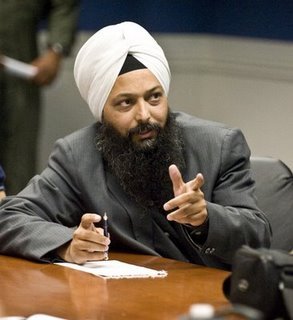 In a previous blog, I wrote about Jarnail Singh Journalist – Sikh Folk Hero. I also mentioned about his action as an act of rebellion that needs the support and institutions to become a revolution. In this post, he, himself, needs support.
In a previous blog, I wrote about Jarnail Singh Journalist – Sikh Folk Hero. I also mentioned about his action as an act of rebellion that needs the support and institutions to become a revolution. In this post, he, himself, needs support.
Unfortunately this week, as he flung his shoe demanding justice, he, himself, was victimized as he was terminated from the Hindi news daily Dainak Jagran, after more than a decade of service.
“As a journalist, I regret what I have done. It was not proper for a journalist to act in that manner. I was emotionally overtaken and exasperated, just like so many Sikhs are,” he said today.
“But I thought the chapter was closed because of the way the home minister had reacted and had accepted that not enough people (who were behind the killing of Sikhs in 1984) had been punished,” Jarnail said.
“Now I feel that I am being victimised, punished for raising my voice against the injustice of 1984 and the CBI’s and the government’s unwillingness to prosecute those who were responsible for it”, Jarnail said. He said he was even more resolute now.[link]
The Sikh Gurus never believed in the exclusivity of their teachings. The Gurus undertook travels to spread their message to peoples of different cultures in their own native languages. The Gurus did not believe in the ideas of any language being ‘sacred’ or ‘special’. [link]
I found the above quote to be quite interesting given a recent conversation I’d had with a close friend of mine. She felt that the Guru Granth Sahib was not accessible to most Sikhs and this inaccessibility was actually detrimental to those Sikhs who wanted to understand the teachings of the Gurus. She recently found herself, on several occasions, wanting to refer to the Guru Granth Sahib in order to obtain some enlightenment on things occurring in her life. There were several obstacles she felt that prevented her from doing so. First, she doesn’t read Gurmukhi (although she is learning) and second, having a sound understanding of Gurmukhi doesn’t necessarily translate to comprehension. While I agree that it is important for each of us to learn Gurmukhi, to help deepen our understanding of Gurbani, I wonder how many Sikhs of our generation are able to truly do so.
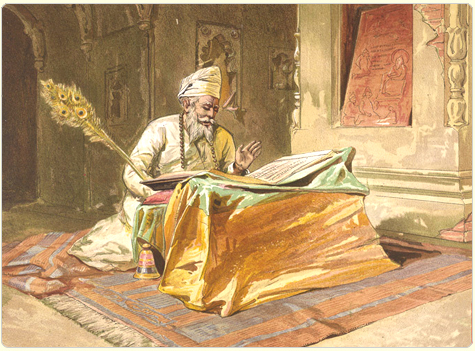 The Christian faith, for example, focuses heavily on bible study and encourages youth to participate in these groups at a young age. In our Gurdwaras, we place a large emphasis on learning Punjabi – an important element in having the tools to access our scriptures. However, we hardly pay any attention to teaching youth how to read and understand Gurbani. The Guru Granth Sahib is the only religious scripture in the world which contains ideas and thoughts of great saints from non-Sikh backgrounds. Without a doubt, it is unique in all sense of the word. If the Guru Granth Sahib is the most important source of wisdom for Sikhs – then why can’t the majority of Sikhs understand it?
The Christian faith, for example, focuses heavily on bible study and encourages youth to participate in these groups at a young age. In our Gurdwaras, we place a large emphasis on learning Punjabi – an important element in having the tools to access our scriptures. However, we hardly pay any attention to teaching youth how to read and understand Gurbani. The Guru Granth Sahib is the only religious scripture in the world which contains ideas and thoughts of great saints from non-Sikh backgrounds. Without a doubt, it is unique in all sense of the word. If the Guru Granth Sahib is the most important source of wisdom for Sikhs – then why can’t the majority of Sikhs understand it?
Last week, I wrote a wrap-up about the 10th Annual Jakara Movement Conference. Sikh Knowledge, a previously featured artist, wrote his thoughts on his blog.
However, an especially important post was written by Pashaura Singh Dhillon. For those that are regular langa(r)-eaders, then you need no introduction. In a post during last year’s presidential election, I introduced a Fresno Punjabi landmark – one of our many great poets.
At last week’s Jakara Movement Conference, Pashaura Singh delivered a powerful poem at the farewell banquet. On his own blog, he introduces the piece, written with a contemporary problem using a traditional Mirza meter. I quote at length:
I was invited to share a poem I wrote at the closing banquet of Jakara Movement. Jakara began in 2000 with a mission to call the next generation of Sikhs from all places, backgrounds and points of view to reflect on their past and prepare for the future. In 2009, they came together as the next generation of Sikhs to continue the process of empowering, engaging , and educating the Sikh community.
Kanwar Anit Singh Saini (Sikh Knowledge) and Kanwar Singh (Humble the Poet), two Canadian rappers and participants of 2009’s Jakara said it best. “1984 is all around us. It is happening in Rwanda. It is happening in Palestine. We should try to find connections with people who are also victims because then the minority becomes the majority.”
But I was not there to repeat what had already been reported or was going to be reported on this subject. As a poet I wanted to invite them to a different plane, whereby they not only take the message of what happened to the Sikhs 25 years ago but also what is happening all around the world today and how it relates to us all. A big picture where these compounded atrocities and excesses not only of humans on humans that are happening everyday but also collectively of humans on this planet Earth, which threatens its very survival. The victim of human’s inhumanity the Earth pleads with the princess of the Skies whose domain the fugitive from Earth is now so impatient to intrude. Without further adieu, here is “Umber Di Shehzadi De Naa: To the Princess of the Skies”

 Two articles over the weekend got me thinking. I’ll get to them soon enough. Be patient!
Two articles over the weekend got me thinking. I’ll get to them soon enough. Be patient!
The issues aren’t new. I remember back to the late 1990s, when the community here in the Bay Area was moving to build the new San Jose Gurdwara. The Evergreen community protested and raised the typical objections – traffic, architecture that doesn’t ‘fit’ into the community, and sometimes the ‘undesirable neighbors’ argument.
Wherever Sikhs try to build something, these three arguments follow. The latest case…..Southall?
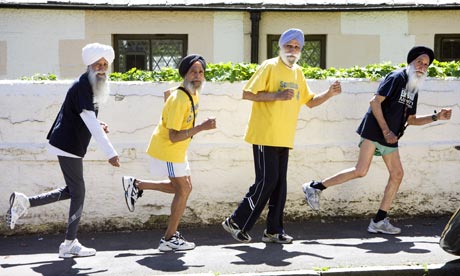
I am inspired. With the growing prevalence of cardiovascular disease, obesity and diabetes in our community – it is important to be inspired. Fauja Singh, Amrik Singh, Ajit Singh and Karnail Singh (with a combined age of 336) recently took part in the Edinburgh Marathon as part of the relay Sikhs in the City team. How have they stayed so healthy? The quartet agrees that a combination of a positive frame of mind, keeping the company of people who are forward looking, not indulging in any excesses, appreciating what God has provided them with and keeping active is the key to being healthy.
All four members of Sikhs in the City share an infectiously positive outlook and lust for life that is key to their ongoing success. Ajit Singh, 79, for instance, has just learned to ride a bicycle, so one of his goals now is to complete a triathlon. He and his lifelong friend Amrik Singh, also 79, have completed more than 1,000 races between them and acted as mentors to Fauja. Karnail Singh, 80, is the newest member of the team and the least experienced runner. His “experimentation” with course routes means that his teammates have to keep an eye on him, but what he lacks in kilometres he more than makes up for in providing the focus for a little gentle mickey-taking. [link]
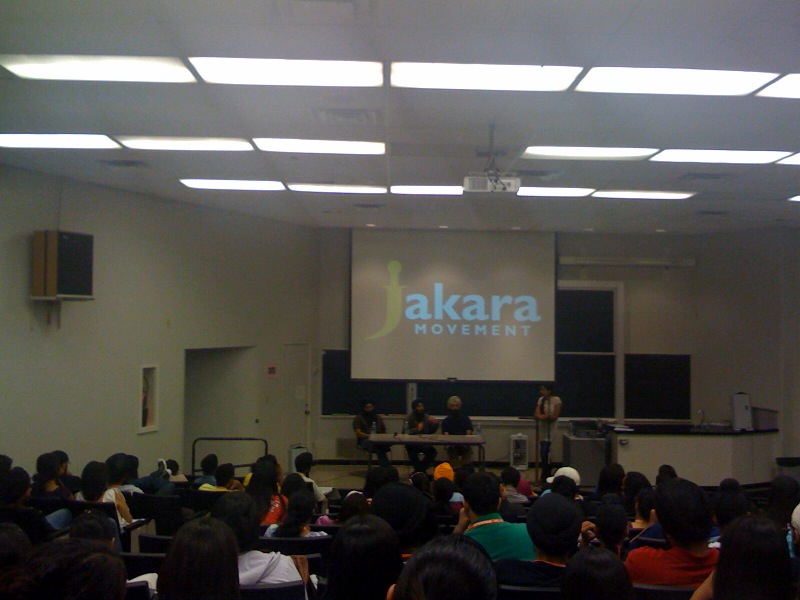 10 years ago the Jakara conference was born;
10 years ago the Jakara conference was born;
5 years ago the Jakara Movement was born.
This year was the 10th annual Jakara Movement conference. This year we Remember 1984.
From remembering the past, reflecting on Gurbani, reconnecting with the voices of the people, rethinking the role of the media, and revering our heroes and sheroes – it was an eventful Friday! Saturday included recognizing the lessons of 1984, reaffirming our commitment to the Sarbat Khalsa and Gurmata tradition of consensus building, recollecting with our brothers and sisters, reacting to their personal histories, responding to the past, and finally realizing a new reality is possible.
From evenings of recreation to days of reflection, the Jakara Movement Conference 2009 aimed to be inspirational, not only for those participating, but for the greater Sikh Qaum as well.
However, merely increasing one’s knowledge about 1984 is not enough. The Jakara Movement is providing avenues to respond and to engage with your community.
 Things are heating up as Sikh transit workers organize against the MTA’s requirement that Sikh workers wear an MTA logo on their turbans. The rationale? The MTA’s position is that this policy is necessary for customers to identify their employees. However, neither the NY City Council, nor the U.S. Department of Justice, is buying this baloney. The 27 of the City Council’s 51 members recently voted to sign onto a letter to the MTA President, opposing the policy, and the Department of Justice has revived an employment discrimination case against the MTA.
Things are heating up as Sikh transit workers organize against the MTA’s requirement that Sikh workers wear an MTA logo on their turbans. The rationale? The MTA’s position is that this policy is necessary for customers to identify their employees. However, neither the NY City Council, nor the U.S. Department of Justice, is buying this baloney. The 27 of the City Council’s 51 members recently voted to sign onto a letter to the MTA President, opposing the policy, and the Department of Justice has revived an employment discrimination case against the MTA.
There are, of course, many ways that customers can identify MTA workers, from the badges they may wear, to a uniform vest, to a standard outfit. So why attempt to brand the turban, specifically? This policy shift, along with previous failed attempts, is indicative of the MTA’s general hostility to religious inclusion and work staff diversity.
